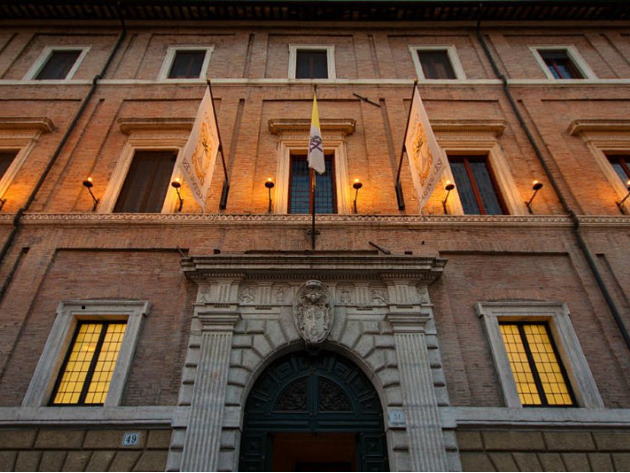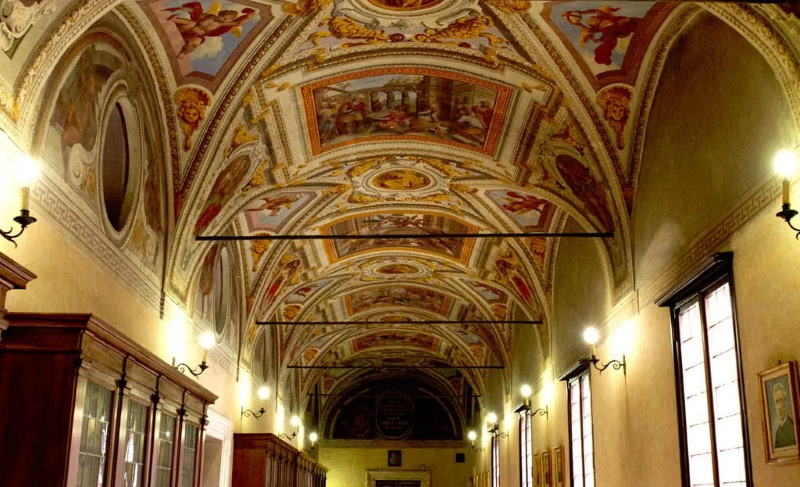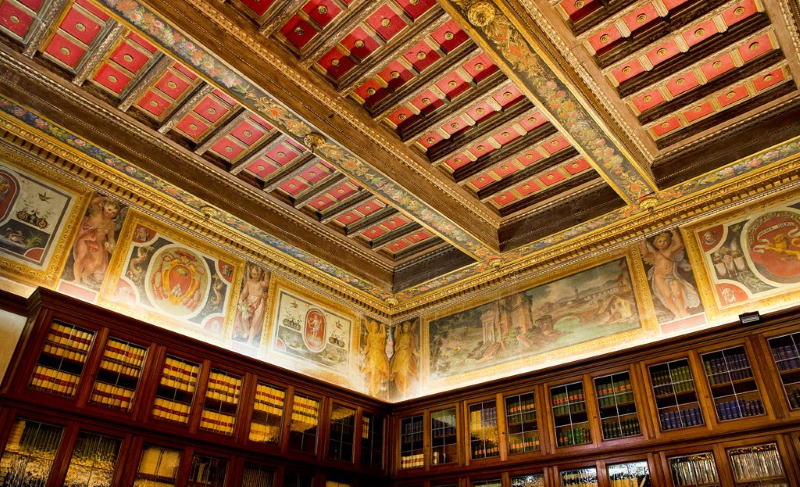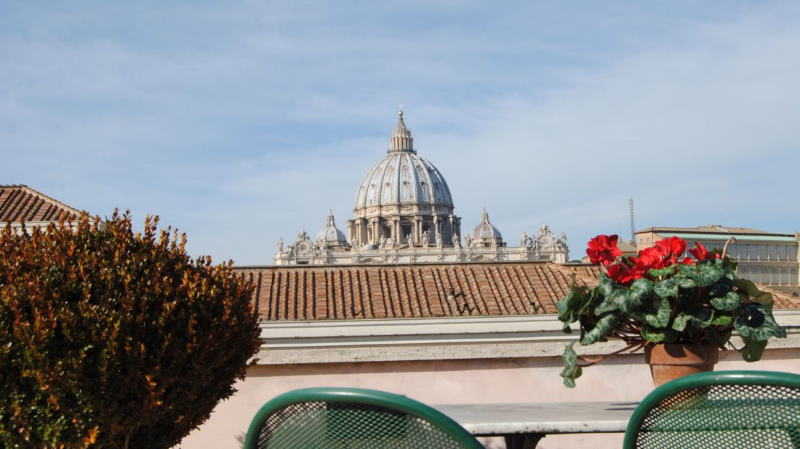



Adjacent to St. Peter’s square and with its main front along Via della Conciliazione, the palace was built for Cardinal Francesco Armellini at the beginning of the 16th century, right where the Roman philosopher Seneca once had his house on the ancient Via Cornelia. In 1527, the palace was pillaged by the Landsknechts of Holy Roman Emperor Charles V, who are said to have taken advantage of its open windows to enter Rome. In 1565 it was purchased by Angelo and Pier Donato Cesi: they took charge of the restructuring, relying for the new project on Martino Longhi the Elder and transforming it into a sumptuous Renaissance building partly preserved to this day.
The founder of the Accademia dei Lincei Federico Cesi lived here in 1600. But the palace has also been the protagonist of more recent history. It has been the motherhouse of the Salvatorian Fathers and Brothers since 1885 and, during the Second World War, Father Pancrazio Pfeiffer acted as the Pope’s trusted negotiator and saved the lives of many Jews, politicians, and partisans by hiding them in the palace.
From the internal cloister-shaped courtyard, which preserves traces of the ancient paving of Via Cornelia, a wide staircase leads to the “piano nobile” at the first floor and to the gallery, decorated with a cycle of 17th-century frescoes representing the life of King Solomon by the school of Pietro da Cortona. The Library, with its 17th-century ceiling in painted wood and frescoed walls, houses important documents on the history of the Salvatorians. The main chapel is decorated with frescoes by Nicola Martinelli and Tommaso Laureti. A second chapel houses the tomb of the founder of the religious congregation Francis Jordan, to whom a small museum is also dedicated. The jewels of the building include the roof-terrace with one of the most beautiful views of St. Peter’s Basilica and the city.
Information
 Condividi
Condividi
Location
To find out about all accessibility services, visit the Rome accessible section.














































